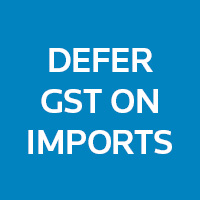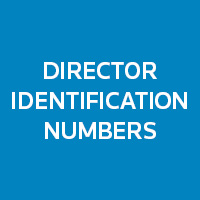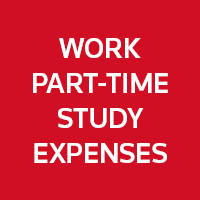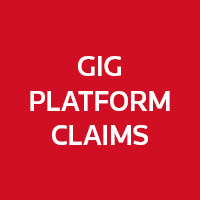
In the 2019–2020 Federal Budget, the Coalition Government announced its intention to provide further reductions in tax through the non-refundable low and middle income tax offset (LMITO).
Under the changes, the maximum reduction in an eligible individual’s tax from the LMITO will increase from $530 to $1,080 per year. The base amount will increase from $200 to $255 per year for 2018–2019, 2019–2020, 2020–2021 and 2021–2022 income years.
In summary:
-The LMITO will now provide a tax reduction of up to $255 for taxpayers with a taxable income of $37,000 or less.
-Between taxable incomes of $37,000 and $48,000, the value of the offset will increase by 7.5 cents per dollar to the maximum offset of $1,080.
-Taxpayers with taxable incomes between $48,000 and $90,000 will be eligible for the maximum offset of $1,080.
From taxable incomes of $90,000 to $126,000 the offset will phase out at a rate of 3 cents per dollar.
Individuals will receive the LMITO on assessment after lodging their tax returns for 2018–2019, 2019–2020, 2020–2021 and 2021–2022. This is designed to ensure that taxpayers receive a benefit when lodging returns from 1 July 2019.
Rate and threshold changes from 2022 and beyond
From 1 July 2022, the Government proposes to increase the top threshold of the 19% personal income tax bracket from $41,000 to $45,000.
Also from 1 July 2022, the Government proposes to increase the low income tax offset (LITO) from $645 to $700. The increased LITO will be withdrawn at a rate of 5 cents per dollar between taxable incomes of $37,500 and $45,000 (instead of at 6.5 cents per dollar between taxable incomes of $37,000 and $41,000 as previously legislated). LITO will then be withdrawn at a rate of 1.5 cents per dollar between taxable incomes of $45,000 and $66,667.
Together, the increased top threshold of the 19% personal income tax bracket and the changes to LITO would lock in the tax reduction provided by LMITO, when LMITO is removed.
From 2024–2025, the Government intends to reduce the 32.5% marginal tax rate to 30%. This will more closely align the middle personal income tax bracket with corporate tax rates. In 2024–2025 an entire tax bracket – the 37% tax bracket – will be abolished under the Government’s already-legislated plan. With these changes, by 2024–2025 around 94% of Australian taxpayers are projected to face a marginal tax rate of 30% or less.
Therefore, under the changes announced in the Budget, from 2024–2025 there would only be three personal income tax rates: 19%, 30% and 45%. From 1 July 2024, taxpayers earning between $45,000 and $200,000 will face a marginal tax rate of 30%.
The Government says these changes will maintain a progressive tax system. It is projected that in 2024–2025 around 60% of all personal income tax will be paid by the highest earning 20% of taxpayers – which is broadly similar to that cohort’s share if 2017–2018 rates and thresholds were left unchanged. The share of personal income tax paid also remains similar for the top 1%, 5% and 10% of taxpayers.
Under its Budget announcements, the Government says an individual with taxable income of $200,000 may be earning 4.4 times more income than an individual with taxable income of $45,000, but in 2024–2025 the higher-income person will pay around 10 times more tax.
Medicare levy low-income thresholds for 2018–2019
For the 2018–2019 income year, the Medicare levy low-income threshold for singles will be increased to $22,398 (up from $21,980 for 2017–2018). For couples with no children, the family income threshold will be increased to $37,794 (up from $37,089 for 2017–2018). The additional amount of threshold for each dependent child or student will be increased to $3,471 (up from $3,406).
For single seniors and pensioners eligible for the seniors and pensioners tax offset (SAPTO), the Medicare levy low-income threshold will be increased to $35,418 (up from $34,758 for 2017–2018). The family threshold for seniors and pensioners will be increased to $49,304 (up from $48,385), plus $3,471 for each dependent child or student.
The increased thresholds will apply to the 2018–2019 and later income years. Note that legislation is required to amend the thresholds, so a Bill will be introduced shortly.
Social security income automatic reporting via Single Touch Payroll
The Government intends to automate the reporting of individuals’ employment income for social security purposes through Single Touch Payroll (STP).
From 1 July 2020, income support recipients who are employed will report income they receive during the fortnight, rather than calculating and reporting their earnings. Each fortnight, income data received through an expansion of STP data-sharing arrangements will also be shared with the Department of Human Services, for recipients with employers utilising STP.
This measure will assist income support recipients by greatly reducing the likelihood of them receiving an overpayment of income support payments (and subsequently being required to repay it).
The measure is expected to save $2.1 billion over five years from 2018–2019. The Government says the efficiencies from this measure will be derived through more accurate reporting of incomes. This measure will not change income support eligibility criteria or maximum payment rates. The resulting efficiencies will be redirected by the Government to repair the Budget and fund policy priorities.
STP expansion
The Government will provide $82.4 million over four years from 2019–2020 to the ATO and the Department of Veterans’ Affairs to support the expansion of the data collected through STP by the ATO and the use of this data by Commonwealth agencies.
STP data will be expanded to include more information about gross pay amounts and other details. These changes will reduce the compliance burden for employers and individuals reporting information to multiple Government agencies.
BUSINESS TAXATION
Instant asset write-off extended to more taxpayers; threshold increased
The Budget contains important changes to the instant asset write-off rules. These changes are in addition to the measures contained in a Bill currently before Parliament.
There are two key changes.
First, the write-off has been extended to medium sized businesses, where it previously only applied to small business entities.
The second important change is that the instant asset write-off threshold is to increase from $25,000 to $30,000. The threshold applies on a per-asset basis, so eligible businesses can instantly write off multiple assets.
The threshold increase will apply from 2 April 2019 to 30 June 2020.
Small businesses
Small business entities (ie those with aggregated annual turnover of less than $10 million) will be able to immediately deduct purchases of eligible assets costing less than $30,000 and first used, or installed ready for use, from 2 April 2019 to 30 June 2020.
Small businesses can continue to place assets which cannot be immediately deducted into the small business simplified depreciation pool and depreciate those assets at 15% in the first income year and 30% each income year thereafter. The pool balance can also be immediately deducted if it is less than the applicable instant asset write-off threshold at the end of the income year (including existing pools). The current “lock out” laws for the simplified depreciation rules (which prevent small businesses from re-entering the simplified depreciation regime for five years if they opt out) will continue to be suspended until 30 June 2020.
Medium sized businesses
Medium sized businesses (ie those with aggregated annual turnover of $10 million or more, but less than $50 million) will also be able to immediately deduct purchases of eligible assets costing less than $30,000 and first used, or installed ready for use, from 2 April 2019 to 30 June 2020.
The asset purchase date is critical. The concession will only apply to assets acquired after 2 April 2019 by medium sized businesses (as they have previously not had access to the instant asset write-off) up to 30 June 2020.
Arrangements before 2 April 2019
The Treasury Laws Amendment (Increasing the Instant Asset Write-Off for Small Business Entities) Bill 2019 was introduced in Parliament on 13 February 2019. It proposes to amend the tax law to increase the threshold below which amounts can be immediately deducted under these rules from $20,000 to $25,000 from 29 January 2019 until 30 June 2020, and extend by 12 months to 30 June 2020 the period during which small business entities can access expanded accelerated depreciation rules (instant asset write-off). The Bill is still before the House of Representatives.
The changes in the Bill interact with the Budget changes. This means that, when legislated, small businesses will be able to immediately deduct purchases of eligible assets costing less than $25,000 and first used or installed ready for use over the period from 29 January 2019 until 2 April 2019. The changes outlined above will take affect from then (with access extended to medium sized businesses).
Date of effect
The changes announced in the Budget will apply from 2 April 2019 to 30 June 2020.
Accordingly, the threshold is due to revert to $1,000 on 1 July 2020. Although it is not spelt out in the Budget papers, a Treasury official confirmed to Thomson Reuters on Budget night that from that time the concession will only be available to small business entities (ie the instant asset write-off will not be available to medium sized businesses).
REGULATION, COMPLIANCE AND INTEGRITY
Tax integrity focus on larger businesses’ unpaid tax and super
The Government will provide ATO funding of $42.1 million over four years to to increase activities to recover unpaid tax and superannuation liabilities. These activities will focus on larger businesses and high wealth individuals to ensure on-time payment of their tax and superannuation liabilities. However, the measure will not extend to small businesses.
Tax Avoidance Taskforce on Large Corporates: more funding
The Government will also provide the ATO with $1 billion in funding over four years from 2019–2020 to extend the operation of the Tax Avoidance Taskforce and to expand the Taskforce’s programs and market coverage.
The Taskforce undertakes compliance activities targeting multinationals, large public and private groups, trusts and high wealth individuals. This measure is intended to allow the Taskforce to expand these activities, including increasing its scrutiny of specialist tax advisors and intermediaries that promote tax avoidance schemes and strategies.
The Government has also provided $24.2 million to Treasury in 2018–2019 to conduct a communications campaign focused on improving the integrity of the Australian tax system.
Black Economy Taskforce: strengthening the ABN rules
The Government intends to strengthen the Australian Business Number (ABN) system by imposing new compliance obligations for ABN holders to retain their ABN.
Currently, ABN holders can retain their ABN regardless of whether they are meeting their income tax return lodgment obligation or the obligation to update their ABN details.
From 1 July 2021, ABN holders with an income tax return obligation will be required to lodge their income tax return and from 1 July 2022 confirm the accuracy of their details on the Australian Business Register annually.
These new requirements will make ABN holders more accountable for meeting their government obligations, while minimising the regulatory impact on businesses complying with the law.
This measure stems from the 2018–2019 Budget measure Black Economy Taskforce: consultation on new regulatory framework for ABNs.
Funding for Government response to Banking Royal Commission
The Government will provide $606.7 million over five years from 2018–2019 to facilitate its response to the Hayne Banking Royal Commission.
On 4 February 2019, the Government proposed measures to take action on all 76 of the Royal Commission’s final report recommendations, including:
-designing and implementing an industry-funded compensation scheme of last resort for consumers and small business ($2.6 million over two years from 2019–2020);
-providing the Australian Financial Complaints Authority (AFCA) with additional funding to help establish a historical redress scheme to consider eligible financial complaints dating back to 1 January 2008 ($2.8 million in 2018–2019);
-paying compensation owed to consumers and small businesses from legacy unpaid external dispute resolution determinations ($30.7 million in 2019–2020);
-resourcing ASIC to implement its new enforcement strategy and expand its capabilities and roles in accordance with the recommendations of the Royal Commission ($404.8 million over four years from 2019–2020);
-resourcing APRA to strengthen its supervisory and enforcement activities, including with respect to governance, culture and remuneration ($145 million over four years from 2019–2020);
-establishing an independent financial regulator oversight authority, to assess and report on the effectiveness of ASIC and APRA in discharging their functions and meeting their statutory objectives ($7.7 million over three years from 2020–2021);
-undertaking a capability review of APRA which will examine its effectiveness and efficiency in delivering its statutory mandate, as well as its capability to respond to the Royal Commission ($1 million in 2018–2019);
-establishing a Financial Services Reform Implementation Taskforce within the Treasury to implement the Government’s response to the Royal Commission, and coordinate reform efforts with APRA, ASIC and other agencies through an implementation steering committee ($11.2 million in 2019–2020); and
-providing the Office of Parliamentary Counsel with additional funding for the volume of legislative drafting that will be required to implement the Government’s response ($0.9 million in 2019–2020).
The Government said these costs will be partially offset by revenue received through ASIC’s industry funding model and increases in the APRA Financial Institutions Supervisory Levies.
ATO analytics: increased funding
The Government will also provide funding designed to increase the ATO’s analytical capabilities.
First, the Government will provide $70 million over two years from 2018–2019 to undertake preparatory work required for the ATO to migrate from its existing data centre provider to an “alternative data centre facility”. The funding will also be used to prepare a second-pass business case that will identify the full cost of activities required to complete the data centre migration project.
The Government will also provide $6.9 million over four years from 2019–2020 to support additional analytical capabilities within the Treasury and other agencies.
SUPERANNUATION
Super contributions work test exemption extended; spouse contributions age limit increased
The Budget confirmed the Treasurer’s announcement on 1 April 2019 that individuals aged 65 and 66 will be able to make voluntary superannuation contributions from 1 July 2020 (both concessional and non-concessional) without needing to meet the contributions work test. The age limit for making spouse contributions will also be increased from 69 to 74.
Super contributions work test
Currently, individuals aged 65–74 must work at least 40 hours in any 30-day period in the financial year in which the contributions are made (the “work test”) in order to make voluntary personal contributions.
The proposed extension of the work test exemption means that individuals aged 65 or 66 who don’t meet the work test – because they may only work one day a week or volunteer – will be able to make voluntary contributions to superannuation, giving them greater flexibility as they near retirement. Around 55,000 people aged 65 and 66 are expected to benefit from this reform in 2020–2021.
The Treasurer said the proposed change will align the work test with the eligibility for the Age Pension, which is scheduled to reach age 67 from 1 July 2023.
The tax law will also be amended to extend access to the bring-forward arrangements for non-concessional contributions to those aged 65 and 66. The bring-forward rules currently allows individuals aged less than 65 years to make three years’ worth of non-concessional contributions (which are generally capped at $100,000 a year) in a single year. This will be extended to those aged 65 and 66. Otherwise, the existing annual caps for concessional contributions and non-concessional contributions ($25,000 and $100,000 respectively) will continue to apply.
Spouse contributions age limit increase
The age limit for making spouse contributions will be increased from 69 to 74. Currently, those aged 70 and over cannot receive contributions made by another person on their behalf.
The proposed increased age limit for spouse contributions may enable more taxpayers to obtain a tax offset for spouse contributions from 1 July 2020. A tax offset is currently available up to $540 for a resident taxpayer in respect of eligible contributions made on behalf of their spouse. The spouse’s assessable income, reportable fringe benefits and reportable employer superannuation contributions must be less than $37,000 in total to obtain the maximum tax offset of $540, and less than $40,000 to obtain a partial tax offset. Of course, if the spouse in respect of whom the contribution is made is aged 67–74 from 1 July 2020, the spouse may still need to satisfy the requisite work test in order for the super fund to accept the contribution.
Exempt current pension income calculation to be simplified for super funds
Superannuation fund trustees with interests in both the accumulation and retirement phases during an income year will be allowed to choose their preferred method of calculating exempt current pension income (ECPI).
The Government will also remove a redundant requirement for superannuation funds to obtain an actuarial certificate when calculating ECPI using the proportionate method, where all members of the fund are fully in the retirement phase for all of the income year.
Background
There are two methods to work out the ECPI for a complying superannuation fund:
segregated method – the segregation of specific assets (segregated current pension assets) which are set aside to meet current pension liabilities; or
proportionate method – a proportion of assessable income attributable to current pension liabilities is exempt.
Since 1 July 2017, SMSFs and small APRA funds (SAFs) are prevented from using the segregated method to determine their ECPI if there are any fund members in retirement phase with a total superannuation balance that exceeds $1.6 million on 30 June of the previous income year. Such SMSFs and SAFs with “disregarded small fund assets” are instead required to use the proportionate method. This is currently the case even if the fund’s only member interests are retirement phase superannuation income streams whereby an actuarial certificate will provide a 100% tax exemption for the income in any event.
Where a SMSF is 100% in pension phase for all or part of an income year, the ATO considers that all of the fund’s assets are “segregated current pension assets” and the fund cannot choose to use the alternative proportionate method. The ATO has previously acknowledged that this legal view is at odds with an industry practice whereby some SMSFs have used the proportionate method even if the fund was solely in pension phase. The ATO therefore granted an administrative concession whereby SMSF trustees did not face compliance action for 2016–2017 and prior years for ECPI calculations based on an industry practice. However, for 2017–2018 and later years, the ATO has expected funds that are 100% in pension phase to only use the segregated method.
Super insurance opt-in rule for low balances: delayed start date confirmed
The Government has confirmed that it will delay the start date to 1 October 2019 for ensuring insurance within superannuation is only offered on an opt-in basis for accounts with balances of less than $6,000 and new accounts belonging to members under age 25.
That delayed start day of 1 October 2019 was previously announced as part of the Treasury Laws Amendment (Putting Members’ Interests First) Bill 2019, which was introduced in the House of Reps on 20 February 2019. That Bill (currently before Parliament) proposes to amend the super law to prevent insurance within superannuation from being provided on an opt-out basis for account balances less than $6,000 and members under 25 years old (who begin to hold a new product on or after 1 October 2019).
Members will still be able to obtain insurance cover within their superannuation by electing to do so (ie opting in). The changes seek to prevent the erosion of super savings through inappropriate insurance premiums and duplicate cover.
The Putting Members’ Interests First Bill essentially re-introduced the Government’s policy proposal that was previously contained in the Treasury Laws Amendment (Protecting Your Superannuation Package) Bill 2018. That Bill received Royal Assent on 12 March 2019, after being passed with Greens’ amendments that removed aspects of the insurance opt-in rule for account balances less than $6,000 and members under 25. The Government agreed to those amendments in the Senate to ensure the prompt passage of the other measures in that Bill. As enacted, that Bill requires a trustee to stop providing insurance on an opt-out basis from 1 July 2019 to a member who has had a product that has been inactive for 16 months or more, unless the member has directed the trustee to continue providing insurance.











